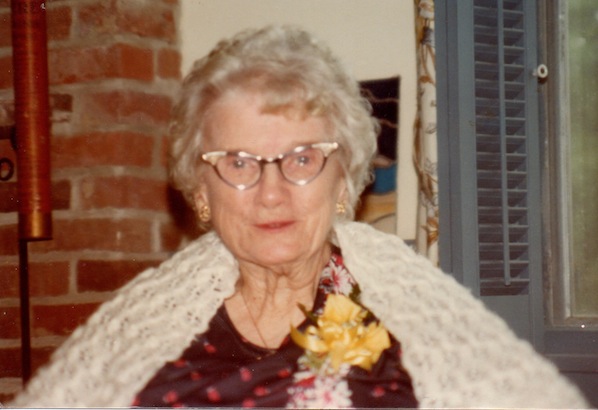Thirty years ago, my beloved grandmother — her name was Joanna Tenney, but we called her Nanny — had a massive stroke and died a few days later.
She had congestive heart failure and had been under treatment in the hospital for about a week when she had the stroke. I didn’t know it at the time, but congestive heart failure is a risk factor for stroke.
Congestive heart failure (CHF) develops when the heart isn’t strong enough to pump blood to other parts of the body. The most common cause is damage to the heart muscle because of a heart attack. As far as I know, my grandmother had never had a heart attack, but heart disease caused by blocked arteries was rampant in her family. So was high blood pressure, the second most common cause of CHF.
Heart disease and high blood pressure are also major risk factors for stroke.
A stroke happens when blood suddenly stops flowing to the brain. Most of the time, a clot has formed inside a blood vessel and it blocks the blood flow (Ischemic stroke). About 20 percent of the time, a stroke happens because an artery bursts and bleeds into the brain (Hemorrhagic stroke).
Stroke risk factors that can be treated or controlled
Some stroke risk factors can be treated or kept under control, including the one at the top of the list.
- High blood pressure
- Tobacco use
- Diabetes
- High cholesterol
- Physical inactivity
- Obesity
- Carotid artery disease (or some other artery disease)
- TIA (more on that in a minute)
- Atrial fibrillation and other types of heart disease
- Certain blood disorders, such as sickle cell anemia
- Excessive use of alcohol and other drugs
Stroke risk factors that can’t be controlled
Some risk factors you can’t do anything about.
- Increasing age
- Gender
- Heredity and race
- History of stroke
The older a person is, the greater his/her risk for stroke. My grandmother was 83, but strokes can also happen in younger people. Recent research shows that ischemic strokes are on the rise in people under age 65. Except for increasing age, their risk factors are the same as for older people.
A woman’s risk
On average, slightly more women than men have strokes.
- Of the 795,000 strokes that happen in the United States every year, more than 53 percent are in women.
- Stroke is the third leading cause of death in women and the fifth leading cause of death in men. It is the fourth leading cause of death overall.
- Black and Hispanic women have a greater rate of stroke than white women.
- High blood pressure related to pregnancy is a leading cause of strokes in younger women who are pregnant or post-partum.
Risk factors unique to women
- Pregnancy
- Preeclampsia
- Gestational diabetes
- Oral contraceptive use
- Postmenopausal hormone use
- Changes in hormonal status
New guidelines for preventing stroke in women
Last year, The American Heart Association/American Stroke Association Council on Stroke issued guidelines for preventing strokes in women. They include paying attention to some warning signs that appear to be more prevalent in women.
Risk factors more prevalent in women
- Migraine with aura
- Atrial fibrillation
- Diabetes
- High blood pressure
- Depression
- Psychosocial stress
Stroke warning signs
When someone has a stroke, oxygen and nutrient-rich blood can’t get to the brain and brain cells begin to die — quickly. The damage may happen inside the brain, but it can affect all parts of the body. Some people will have trouble speaking, swallowing, thinking or walking. Others may feel weak or numb or be in pain. A stroke may also cause paralysis and it can kill.
I still remember visiting my grandmother the day after her stroke. She tried desperately to speak to me, but her words came out all garbled. I will never forget the panic I felt in my chest and saw in her eyes.
I don’t know if other than her symptoms of congestive heart failure, my grandmother had any stroke warning signs.
The most common signs of a stroke are:
- Sudden numbness or weakness in face, arm or leg (on one side)
- Sudden confusion, trouble speaking or understanding
- Sudden trouble seeing in one or both eyes
- Sudden trouble walking, dizziness, loss of balance or coordination
- Sudden severe headache with no known cause
Some people will have a transient ischemic attack or TIA. The symptoms are the same as a stroke but usually, last only a few minutes. Never ignore a TIA because about 15 percent of major strokes are preceded by one (or more).
What to do if you think you’re having a stroke
First, call 9-1-1. Immediately!
Not sure about the symptoms? Think F.A.S.T.
F – Face drooping
Does one side of the face droop or is it numb?
A – Arm weakness
Is one arm weak or numb?
S – Speech difficulty
Is speech slurred?
T – Time to call 9-1-1
Even if symptoms go away, call 9-1-1 immediately.
This infographic from the Stroke Association says it all.
If someone is having a stroke, it’s critical to get medical attention right away. It can help prevent long-term effects and even death.
My Nanny was already in the hospital when she had her stroke, but maybe there were subtle signs early on that we should have noticed. If we had, we might have been able to enjoy her mischievous sense of humor and her unconditional love a little bit longer.
Don’t let it happen to someone you love. You can get more information about stroke prevention and warning signs from the Stroke Association.



Leave A Comment